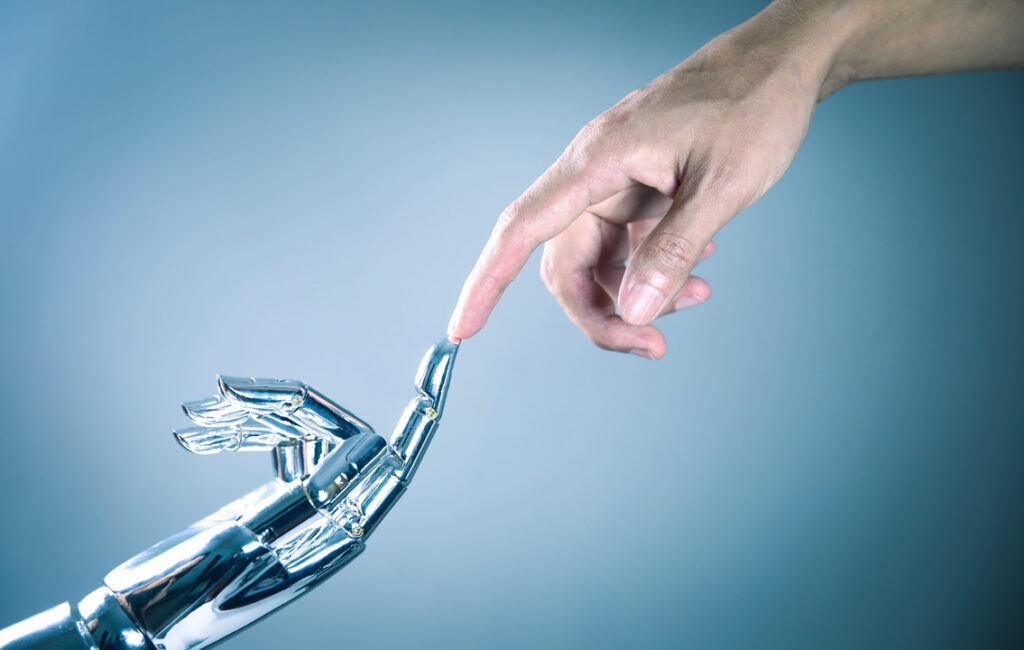BPO in the era of AI
For decades, Business Process Outsourcing (BPO) was seen as a world run almost entirely by people — vast teams managing calls, processing transactions, handling payrolls, and keeping the business wheels turning. Fast forward to today, and the landscape looks remarkably different. Artificial Intelligence (AI) is no longer a buzzword floating around strategy decks; it’s actively shaping the way outsourcing companies operate. But here’s the kicker: it’s not replacing humans outright — it’s teaming up with them.
This shift towards a hybrid model — where humans and AI collaborate rather than compete — is redefining what efficiency, accuracy, and customer experience really mean.
Why Hybrid, Not Fully Automated?
Let’s bust the myth right away: full automation isn’t the dream everyone should be chasing. While AI can process information at lightning speed, it lacks empathy, cultural nuance, and the ability to truly connect with people — traits that customers, clients, and employees still deeply value.
The hybrid model leverages the best of both worlds:
- AI for scale, speed, and repetitive tasks.
- Humans for judgment, creativity, and emotional intelligence.
Real-World Impact: Where Is AI Enhancing BPO?

The Benefits of AI-Human Collaboration in Outsourcing
- Customer Support:
AI-powered chatbots now handle FAQs, appointment scheduling, and order tracking round the clock. But when a frustrated customer needs reassurance or a complex problem solved, the baton passes seamlessly to a human agent. This reduces wait times while preserving empathy. - Collections and Finance:
Predictive analytics helps identify high-risk accounts before they turn delinquent. AI assists with reminders and payment nudges, while human agents handle negotiation and dispute resolution — where relationship management is key. - Back-Office Processing:
Data entry, document verification, invoice matching — AI eats these tasks for breakfast. Humans then step in to validate exceptions, resolve anomalies, and provide strategic oversight. - Human Resource Outsourcing (HRO):
AI screens resumes at scale, identifies potential red flags, and streamlines onboarding documents. But it’s the HR team that makes the final call, ensuring culture fit and personal connection.
The Human Factor: More Important Than Ever
Ironically, as AI becomes more prevalent, the human element in outsourcing is becoming more precious. Clients want partners, not just processors. Employees want growth, not just grunt work. Customers want conversations, not just canned responses.
Hybrid models allow BPOs to invest in upskilling agents — teaching them how to work alongside AI tools, interpret analytics, and make data-driven decisions without losing their personal touch.
Think of it this way: AI is the muscle, humans are the heart.
Challenges to Get It Right

Transitioning to a hybrid model isn’t plug-and-play. It comes with its own hurdles:
- Change Management: Employees may fear being replaced by AI, so transparent communication is key.
- Data Privacy & Compliance: More automation means stricter governance around data handling.
- Technology Integration: Legacy systems often need an overhaul to integrate modern AI platforms.
- Continuous Training: AI is evolving; so must the workforce.
The companies that succeed are those that treat this shift not as a cost-cutting exercise, but as a capability-building journey.
What the Future Holds
Looking ahead, the most successful BPOs won’t be those that go “all-in” on automation or cling too tightly to human-only operations. The winners will be the hybrid players — agile, adaptive, and emotionally intelligent.
Imagine a future where:
- AI predicts a customer’s frustration before they even reach out.
- Agents receive real-time coaching from AI tools during calls.
- Back-office tasks run silently in the background, freeing people to innovate on the frontlines.
This is not a distant dream — it’s already happening in leading outsourcing hubs around the world.
Final Thoughts: Collaboration, Not Competition
The conversation around AI in outsourcing has been dominated for too long by fear — fear of replacement, fear of dehumanization, fear of the unknown. But the reality is more hopeful: AI is not here to steal jobs; it’s here to reshape them.
Humans bring context, compassion, and creativity. AI brings speed, scale, and precision. Together, they form the new powerhouse of business outsourcing — one that’s faster, smarter, and ultimately more human.
The question isn’t whether to adopt AI, but how to make it your partner in progress.


